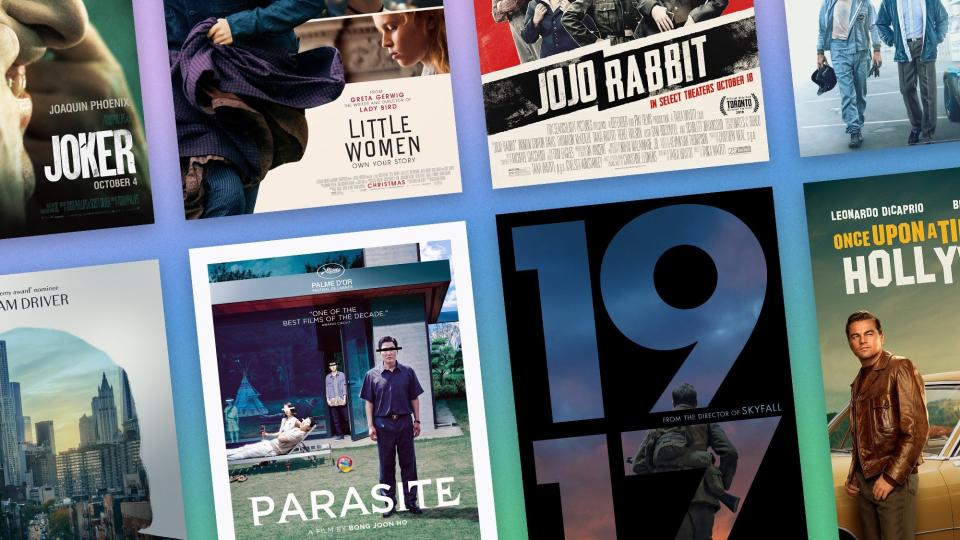Every Academy Awards Best Animated Feature Winner, Ranked
Two decades ago, the category at the Academy Awards for Best Animated Feature didn’t exist. Shrek, everyone’s favorite ogre, took home the inaugural award in 2002. Before that, animated movies didn’t get much respect at the Oscars. In fact, Beauty and the Beast was the only animated movie ever to be nominated for Best Picture, and with one-off exceptions like The Nightmare Before Christmas’s 1993 Best Visual Effects nomination, the only time animated films were honored at Hollywood’s biggest night was in the music categories.
The Academy Awards' Best Animated Feature award changed that, ensuring that there would always be a place for animation at the Oscars. You could argue that the category’s addition meant a net loss, ultimately, that by giving animation its own award, the Academy wouldn’t feel as much pressure to have cartoons compete in any “more serious” category. That criticism has been somewhat undercut by the expansion of Best Picture nominees from five to ten, meaning there’s more room for animated movies to sneak in (as Up and Toy Story 3 did), but for the most part, animated movies are still considered separate—a distinction that could uncharitably be likened to putting them in the kiddy corner.
Such a sweeping dismissal is cartoonishly misguided. Animation is a medium, not a genre, and animated movies are not inherently for children (or at least just for them). The 18 Best Animated Feature Winners are, for the most part, shining examples of all-ages entertainment, and among the bunch, adult viewers might get just as much—if not more—than the little ones they’re targeted to (see like, half of Pixar’s output). Together, the winners show the breadth and potential of animation as a medium, in many cases doing things that their live-action counterparts could not.
Here are all 18 winners, ranked from “pretty good” to “film masterpiece with no need to qualify it as ‘animated.’”
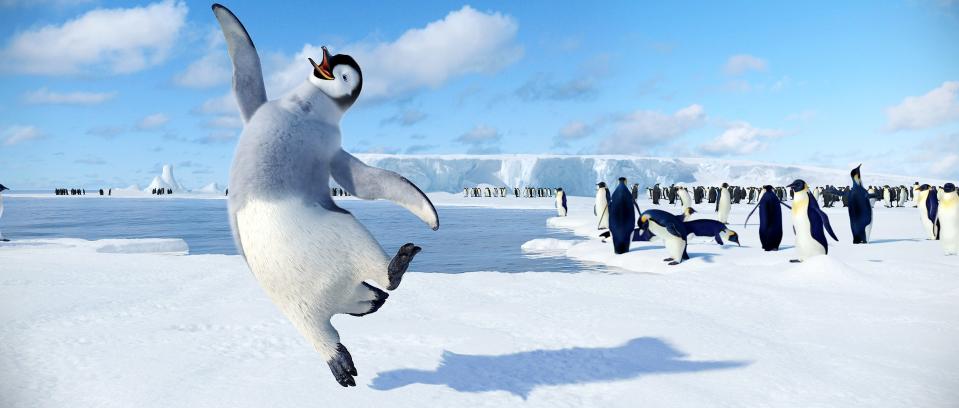
18. Happy Feet (2006)
A jukebox-style musical March of the Penguins with tap dancing covers of an eclectic group of songs sounds like it should be a gimmicky nightmare. But I will say this for Happy Feet: It is unfathomably better than it should be. Happy Feet taps into a real kinetic energy that makes even the most baffling musical numbers entertaining, and there’s a nice environmentalist message in the third act, which features a twist and some humans who apparently visited Antarctica from their home in the uncanny valley. Still, compared to the other winners, Happy Feet can’t quite surpass its own oddity—again, musical numbers, penguins, etc.—and it doesn’t help that 2006 was probably the weakest crop of nominees the category’s had.
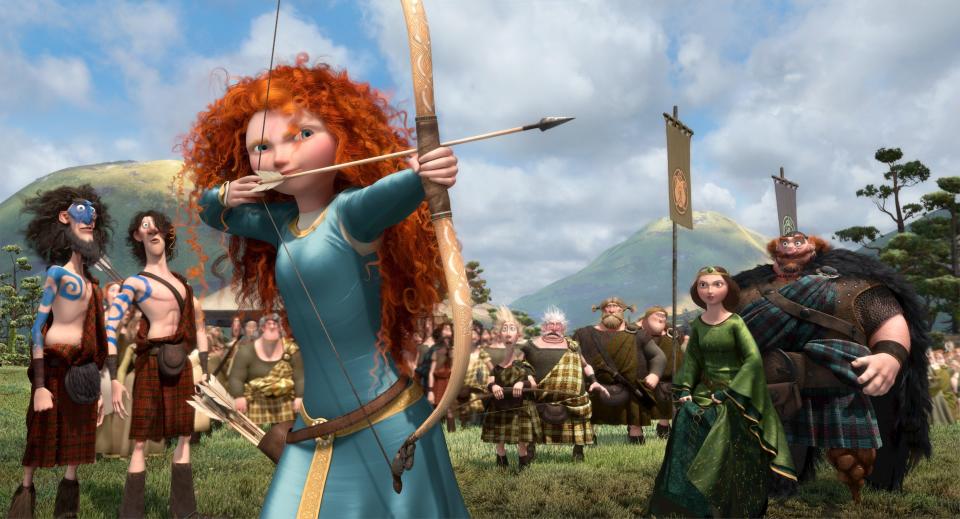
BRAVE, from left: Lord Macintosh (voice: Craig Ferguson), Young Macintosh, Merida (voice: Kelly Macd
17. Brave (2012)
With the exception of Cars, which earned enough money in toy sales that everyone was willing to give Pixar a pass, Brave was the first movie the acclaimed studio made that everyone seemed to agree was “pretty good” rather than a Toy Story or Up-like masterpiece. That’s okay—and Brave is, for the record, leagues better than Cars. The story of Merida, a Scottish princess with warrior ambitions and trouble with an ursine curse, is certainly exciting and empowering, if not particularly deep or poignant beyond what’s happening on screen. It just can’t quite surpass being another princess fable, even with Pixar’s touch and modern sensibilities.
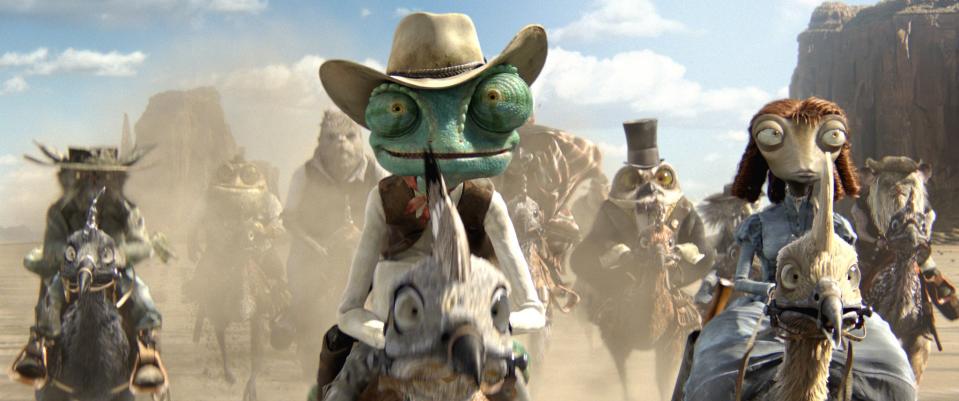
RANGO, front, from left: Rango (voice: Johnny Depp), Beans (voice: Isla Fisher), 2011. ©Paramount Pi
16. Rango (2011)
One of the rare non-Disney or Pixar films to win the award (they make great movies but are absolutely a whomping monopoly), Rango is unique in a way we don’t see as much these days. The animation, while beautifully done, isn’t exactly welcoming by design, nor is the dry desert setting where the titular chameleon and his sun-baked, hardscrabble animal compatriots live. It’s a western with deliberate Fear and Loathing in Las Vegas vibes, but marketed mainly towards children—so the intended audience is as confused as Johnny Depp’s eccentric main character. You have to wonder, “who is this for?” with Rango, and while the film doesn’t quite come up with an answer, you’ve got to admire how gonzo it is.
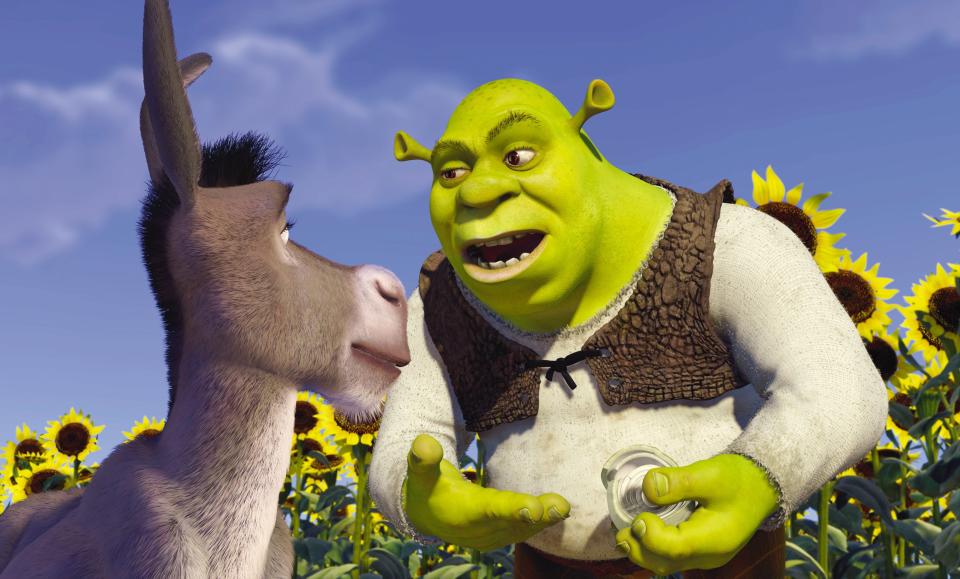
15. Shrek (2001)
Nearly 20 years later, Shrek is a punchline. The movie itself, which was almost universally beloved when it came out, has become nearly irrelevant under the irony-poisoned weight of the Smash Mouth of it all, nevermind the viral GIFs of Shrek passionately kissing Shadow the Hedgehog. Shrek’s swamp is the genesis of the much-mocked Dreamworks Animation “face,” and in retrospect, the plot doesn’t so much subvert classic Disney tropes as it does apply low-hanging Family Guy-style reference humor to them. But over the time it took for Shrek to grow old enough to vote, everything we initially thought was great about the movie has become an iconic, ironic part of our cultural fabric. We love Shrek, even if we won’t admit it. Sure, Shrek’s kind of embarrassing, but like an onion, it has layers.
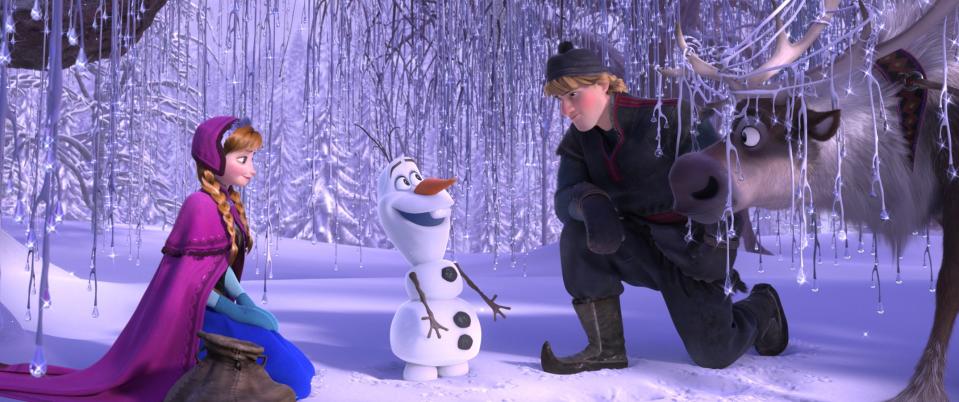
14. Frozen (2013)
You won’t hear a bad word about “Let It Go,” a truly amazing, all-time classic Disney song. Let that song go, though, and you’ll find that the rest of the movie doesn’t have nearly the same power. Elsa and Anna are great, modern additions to Disney’s princess roster, the subversive take on love at first sight is appreciated, and Hans is a shockingly relevant villain in the era of toxic masculinity. Despite how hard it tries, Frozen still feels stuck in an earlier era of Disney stories, and reinvention can only thaw tradition so much.
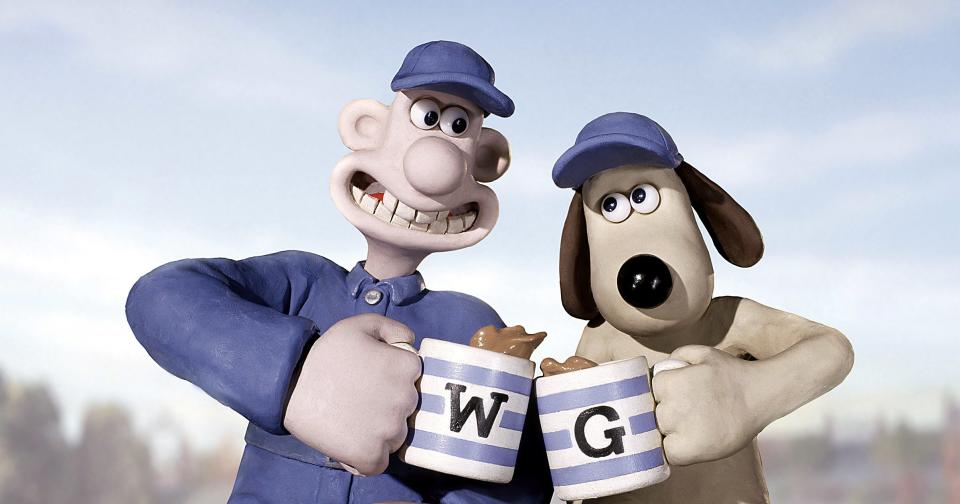
WALLACE AND GROMIT: THE CURSE OF THE WERE-RABBIT, Wallace, Gromit, 2005, (c)DreamWorks/courtesy Ever
13. Wallace and Gromit: The Curse of the Were-Rabbit (2005)
Compared to slick CGI or Disney panache, Aardman Animations’ most famous duo are delightfully, refreshingly quaint. Wallace and Gromit’s feature-length adventure—which drops the cheese-loving British chap and his straight-man dog into a classic Hollywood, Universal-style monster movie—doesn’t aspire to much but it’s undeniably charming. You can see the love that went into making it almost literally, thanks to the stop-motion animation, which makes the artist’s touch an essential part of the moviemaking.
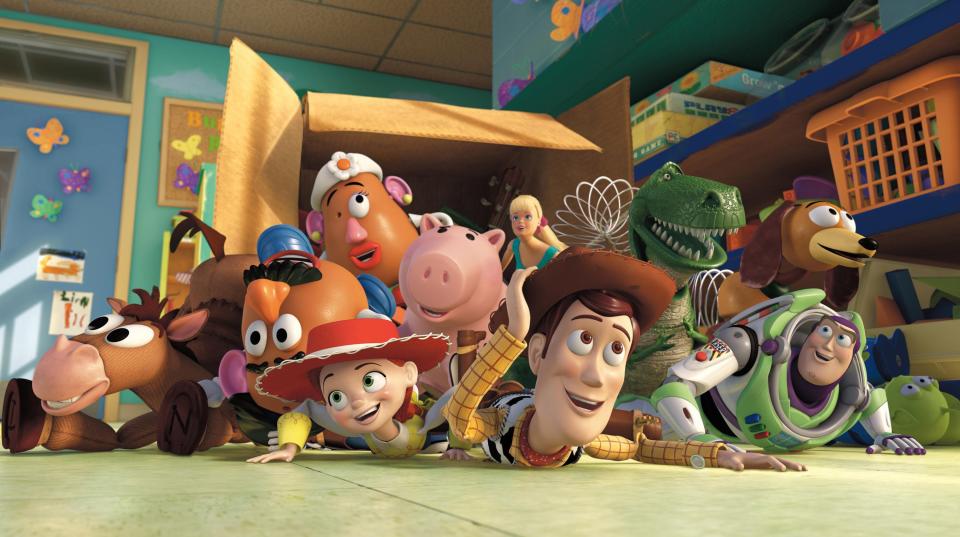
12. Toy Story 3 (2010)
Toy Story 4 somewhat undermined its predecessor’s perfect ending to Pixar’s first franchise, but rewatching Woody, Buzz, and the gang’s encounter with mortality still pulls at the heartstrings. But at the risk of being pushed into a garbage incinerator, a decade later, Toy Story 3 feels overrated. The beautiful message—that things change and it’s okay to change with them—gets muddled under the weight of the worldbuilding and continued exploration of what it means for toys to be alive. Other Pixar movies on this list played with the idea more organically, to bigger emotional payoff.
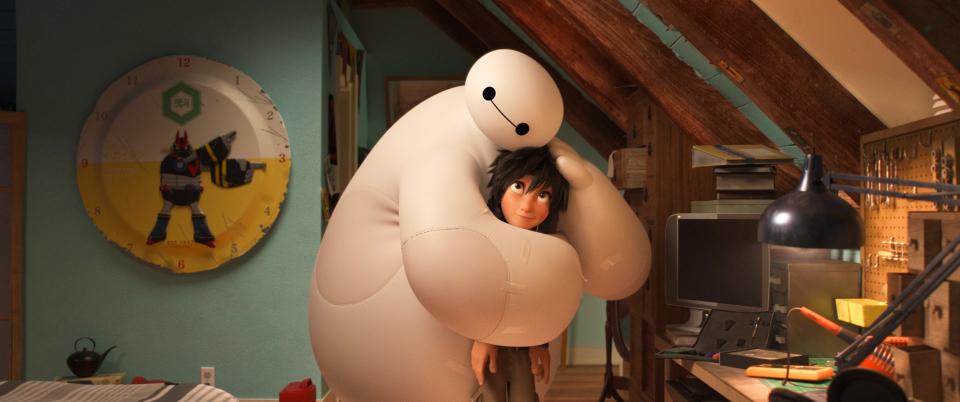
11. Big Hero 6 (2014)
Disney Animation reached into one of the deepest sections of Marvel’s toy box for Big Hero 6, which is loosely based on the superhero team of the same name. Rather than just a cheap example of convenient IP synergy, Big Hero 6 is a high-flying ode to families, both the ones we’re born into and the ones we make along the way. San Fransokyo is a wonder of culture-mixing, and the superhero plot finds the humanity in STEM, as Hiro and his friends learn to be more than just their inventions. Baymax was willing to die for Hiro, but I would die for Baymax.
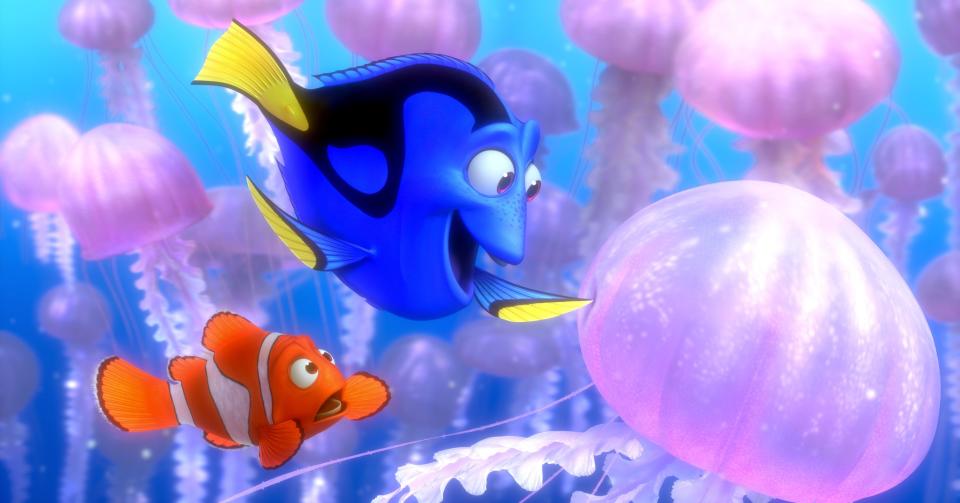
10. Finding Nemo (2003)
Finding Nemo might be the most quotable Pixar movies (“Just keep swimming,” “Fish are friends, not food,” “P. Sherman 42 Wallaby Way”), and with its lush rendering of an undersea world, it’s one of the most beautiful too. But Dory and Marlin’s trip through the deep blue sea isn’t just bright colors and catchphrases; it’s an honest take on parental love and duty, putting the push-pull of overprotection and rebellion inside of an adventure that spans the Pacific. Finding Nemo also deserves credit for sincerely exploring that classic “dead mom” Disney trope, which is refreshing as the ocean is wet.
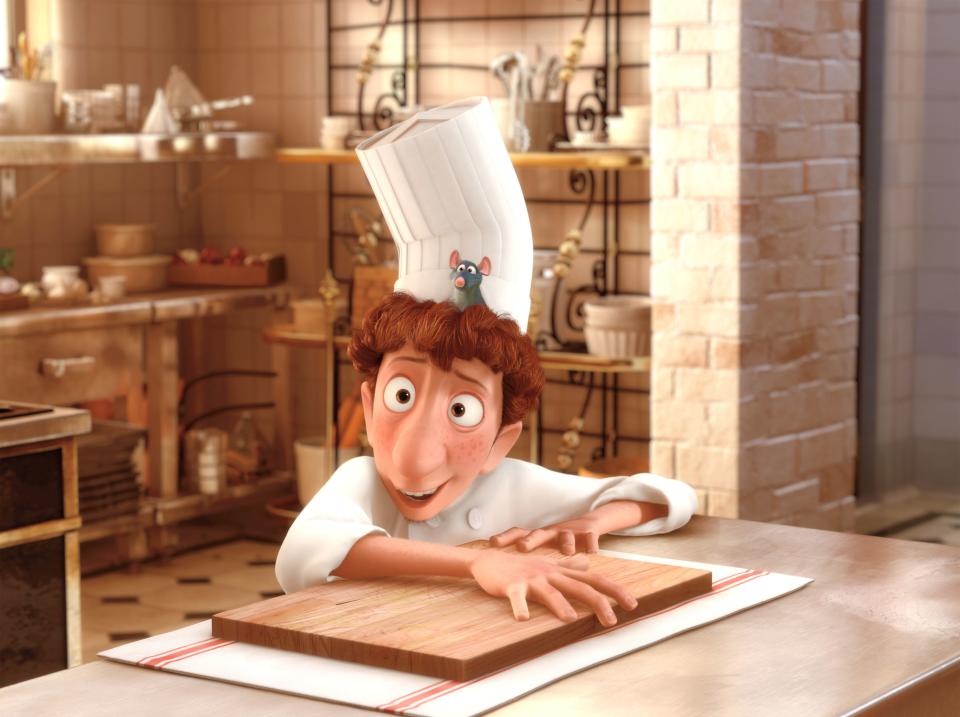
RATATOUILLE, Linguini (voice: Lou Romano), Remy (voice: Patton Oswalt), 2007. ©Walt Disney Co./court
9. Ratatouille (2007)
Ratatouille doesn’t contain as dramatic a message as the movies that dominate the top of this list. It’s not an exploration of grief, an environmentalist warning shot, or an allegory on racism. But the idea that “anyone can cook” is, in its own quiet way, hearty and warm. Ratatouille is a movie starring cute kitchen vermin that’s about believing in yourself and finding your strengths (with maybe a little bit of help hidden under your toque blanche). It’s a film that invites you to try, while also welcoming you into a comfortable, five-star restaurant with food that looks so delicious you’d almost swear you can smell it through the screen.
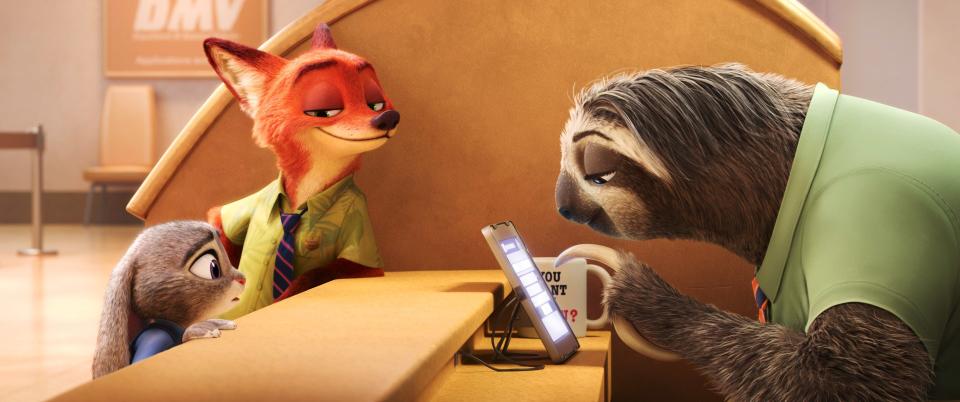
8. Zootopia (2016)
There’s a moment when you watch Zootopia for the first time when you go from “Oh, it’s a metaphor for racism” to “Oh wow, it’s really a metaphor for racism!” Like the frenzied mammals at the center of the legitimately engrossing conspiracy theory that drives the plot, Zootopia goes for the jugular—attacking the destructive nature of prejudice in a fully realized world that feels like a modern-day Aesop's fable. Better, even, because Aesop’s ancient Greek parables didn’t feature any Shakira musical numbers.
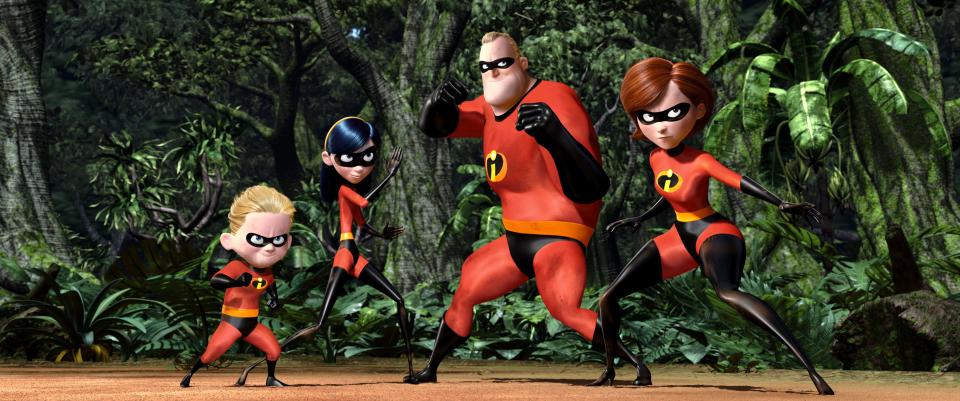
7. The Incredibles (2004)
It honestly doesn’t matter that Marvel Studios has obtained the film rights to the Fantastic Four, because The Incredibles is already a perfect Fantastic Four movie. Though the superhero action and sweet mid-century modernist aesthetic are thrilling, the movie succeeds because it understands the people underneath the masks. In this case, they’re a family of four (plus little Jack-Jack) who are trying to do the right thing by themselves and to each other. The Incredibles rightly makes being part of a family as heroic an undertaking as the Parrs’ superpowered exploits. If there’s a nit to pick at here, The Incredibles does unfortunately (and hopefully unintentionally) come off as a tacit endorsement of Ayn Rand-style objectivism, which is ironic considering the emotional core of the movie celebrates a more relatable heroism.
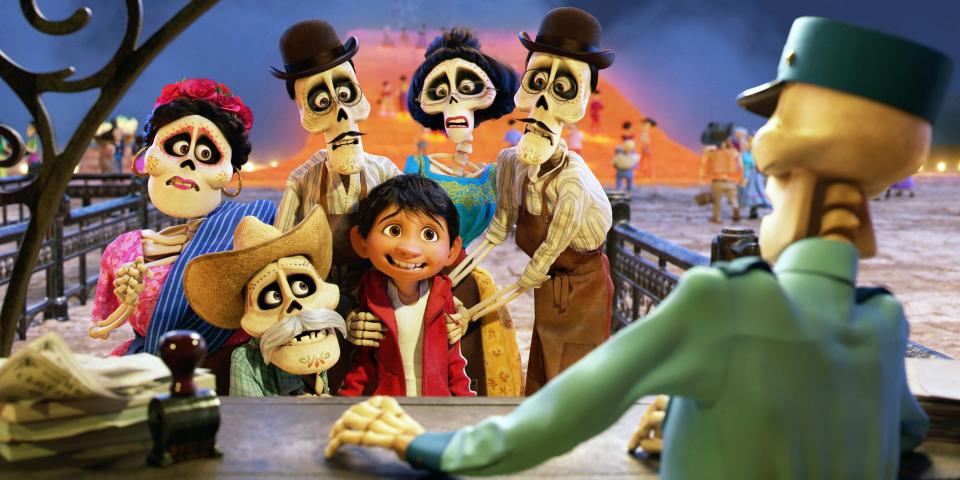
Coco
6. Coco (2017)
Coco explores the afterlife, the meaning of family, and a rich culture that rarely sees this type of blockbuster representation without missing a beat, as is fitting for such a musically driven movie. Other Disney and Pixar movies have dealt with loss, but Coco, using a skeletal, technicolor take on Día de los Muertos, hits a different note. The people we love are never really gone, if we remember them.
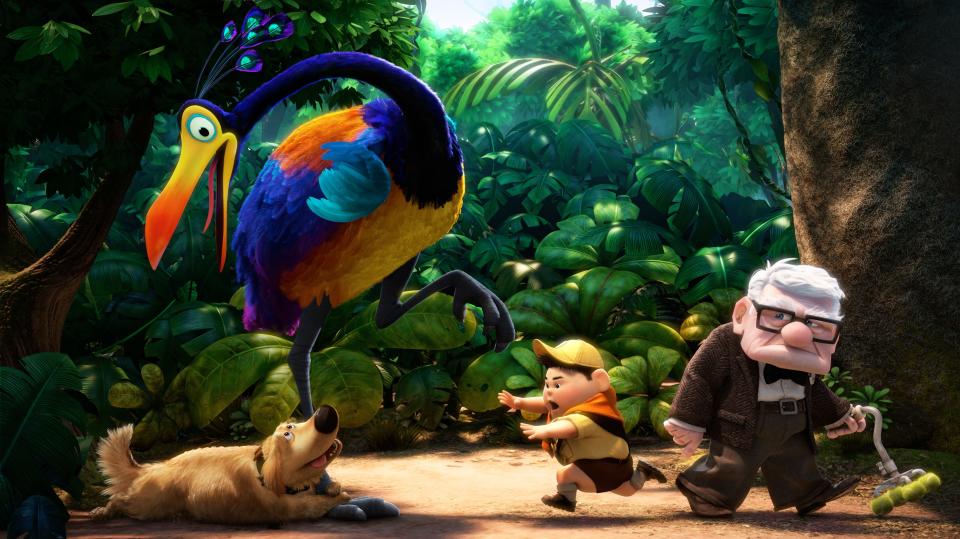
UP, from left: Dug (dog), Kevin (bird), Russell, Carl Fredricksen (voice: Ed Asner), 2009. ©Walt Dis
5. Up (2009)
Pixar’s take on Sir Arthur Conan Doyle's The Lost World is a joyful, pulpy adventure, complete with talking dogs, prehistoric birds, and fanciful airships hovering above misty mesas. But—c’mon—that’s not why it’s top tier. Up’s opening montage of Carl and Ellie’s life together is a weapons-grade tearjerker, and in those mostly wordless five minutes, we understand everything we need to about who these people were; it gives Carl’s subsequent high-flying journey weight, and makes it matter to us. Up is a masterclass in storytelling economy, reaching emotional highs that most other movies could only dream of.
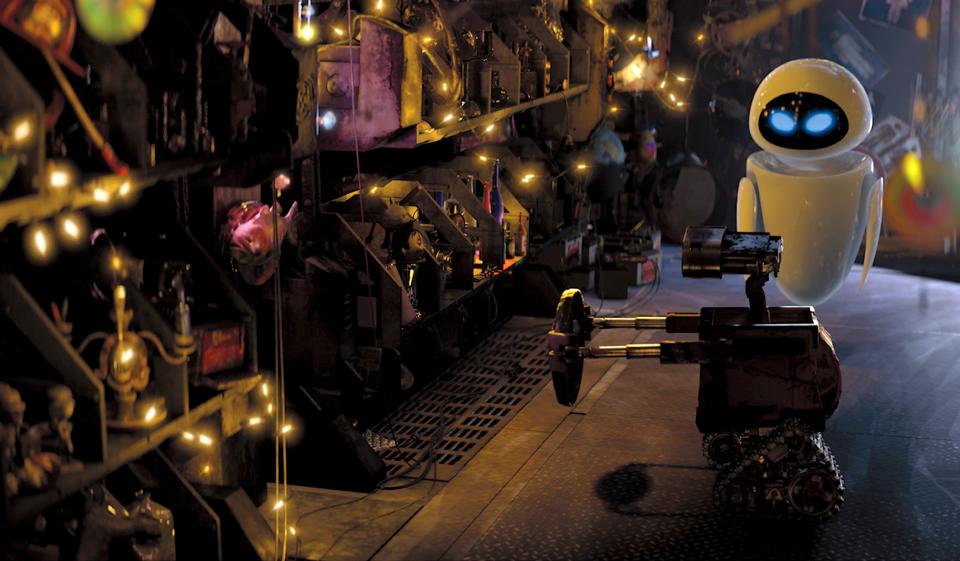
4. Wall-E (2008)
A semi-silent, post-apocalyptic, love story with an environmentalist message that is, in all honesty, pretty pessimistic? Wall-E trusts that its audience needs no coddling or hand-holding, and the result is a masterpiece that manages to be both breathtakingly high-minded and hyper simplistic all at once. The man-made collapse of Earth’s ecosystem and our species’ vegetative future are almost too big and terrifying to consider (although, honestly… look around you), but Wall-E invites us to try as we watch two adorable robots fall in love. Along with The Dark Knight’s Best Picture snub the same year, Wall-E is almost certainly partially responsible for the Academy doubling the number of nominees. A movie this bold and beautiful deserves to compete for the top honor.

3. Inside Out (2015)
There are lots of Pixar movies that will make you cry. Inside Out, though, will eke out tears while making you consciously glad that you’re sad. The film’s message—that not only is it okay to be sad, it’s vital to surviving—is essential and groundbreaking. Everyone should know this, and Inside Out plays just as well to kids who are lucky enough to group up with this understanding as it does to adult viewers who might need the reminder. Joy and Sadness, voiced by Amy Poehler and a truly incredible Phyllis Smith, are relatable personifications of the complexities that all of us have in our own heads. Inside Out is fantastical, but it never forgets how real feelings are.

SPIRITED AWAY, (SEN TO CHIHIRO NO KAMIKAKUSHI), No-Face, Chihiro, Zeniba, 2001, (c) Walt Disney/cour
2. Spirited Away (2002)
It would be easy to praise Hayao Miyazaki’s masterpiece for its visuals: a uniquely Japanese, singularly Ghibli feast of lavish and fantastic sights. (The spirits! The bathhouse!) The only non-Western winner of the Best Animated Feature award brings a refreshing bit of imagination and perspective to the group, certainly. But Spirited Away soars not when Chihiro is flying through the sky on Haku’s dragon back (though that scene, like so many in the movie, is iconic). Instead, it’s the quieter moments: Chihiro breaking down into big, wet tears upon seeing her parents as Haku comforts her with an offer of food. Kamaji the boiler-man putting a little blanket over her sleeping body. Chihiro and No-Face sitting quietly on a train full of commuting shadows.
It’s these little vignettes that show the full spirit of Spirited Away, grounding the fantasy and wonder with human moments of kindness and weakness—and Chihiro’s eventual strength wouldn’t mean anything without these vulnerabilities. Spirited Away is unlike most other movies on this list. There’s not really even a bad guy. It’s beautiful and meditative, subverting expectations for what a movie should look and feel like and transporting viewers to a land of wonders of all sizes.
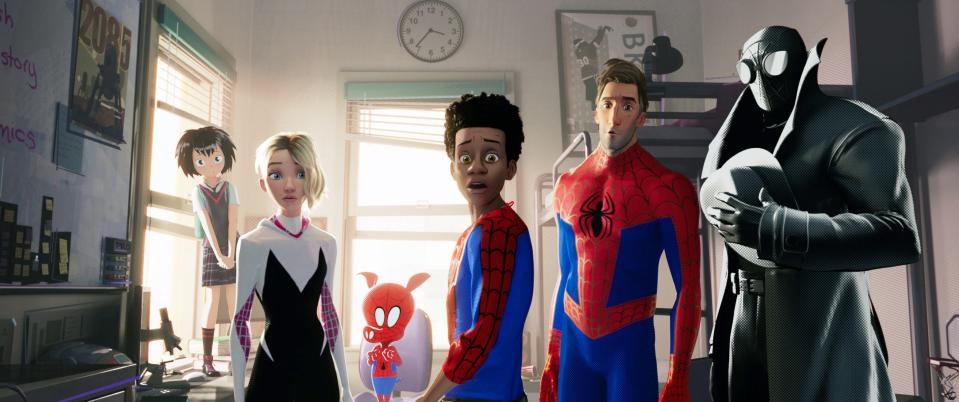
MCDSPIN EC088
1. Spider-Man: Into the Spider-Verse (2018)
Into the Spider-Verse has something for everyone. Superhero fans can enjoy a web-slinging Spidey story that looks like it’s straight out of a comic book. (Seriously, the movie’s animation style looks totally unlike anything else that’s ever been on the big screen, and the dazzling, ben-day dotted visuals are a jaw-dropping achievement. A live-action movie could not do what Spider-Verse does.)
The animation deserves universal praise, but Into the Spider-Verse also has something specific for every viewer. Miles Morales is a triumph of representation, and he’s also related to anyone trying to define who they are at a critical age. Peter B. Parker’s doubt and life-crisis strike a chord with those in the next stage of life—perhaps needing the same encouragement to take that “leap of faith.” Miles’s father stands for the trials and beauty of parenthood, offering sympathy for anyone also struggling to connect with the kids they love more than anything. Heck, the littlest viewers might’ve just really liked it when Spider-Ham hit that guy on the head with a big hammer.
There’s no wrong answer, and that’s the true triumph of Into the Spider-Verse. In part because it taps into the multiverse, Into the Spider-Verse gets at the universality of the superhero story, ensuring that there’s something in this adventure that will speak to you. Anyone can wear the mask.
As the decade comes to a close, Kyle McGovern presents a ranking of the films that defined a tumultuous time for the Academy.
Originally Appeared on GQ
